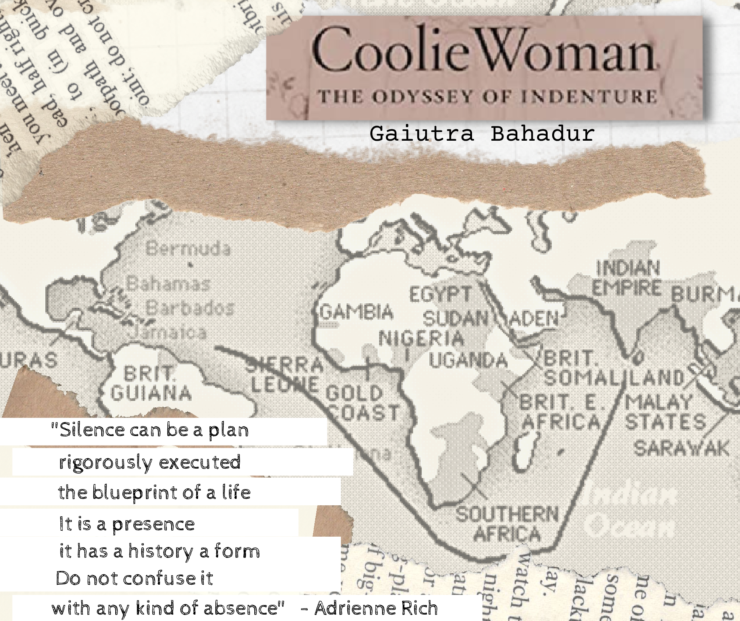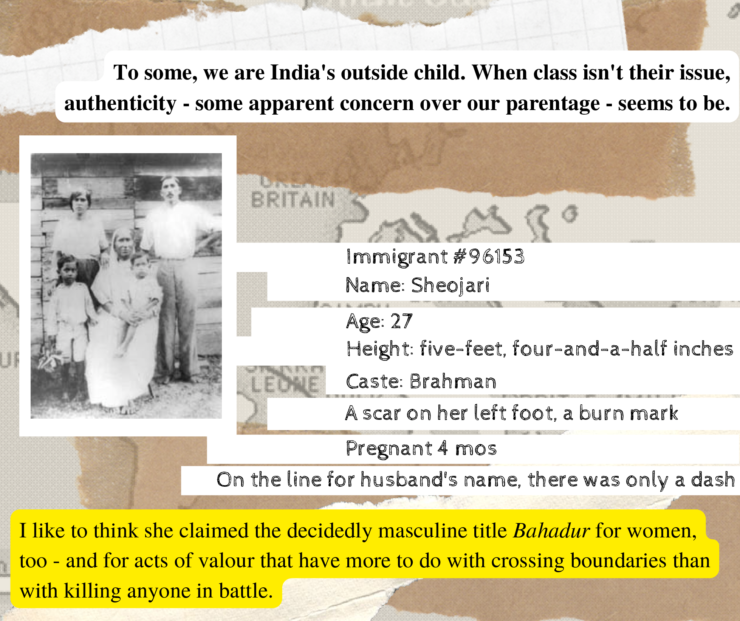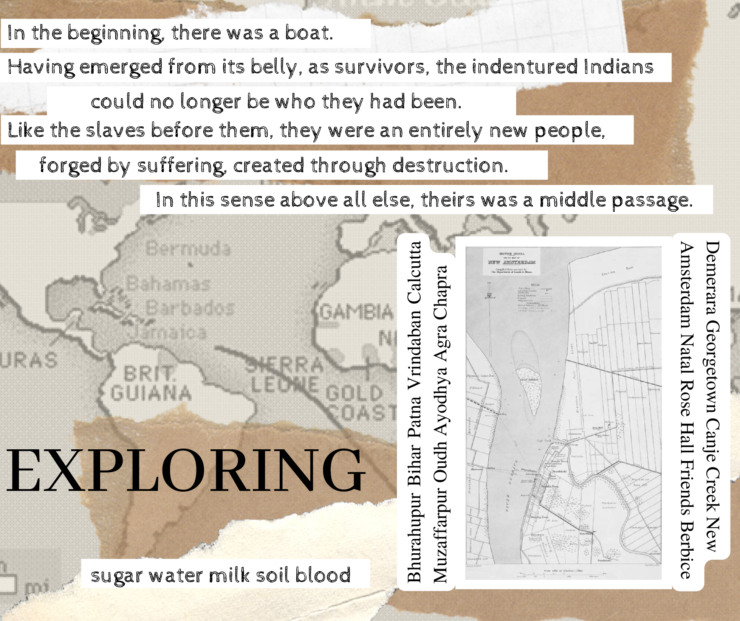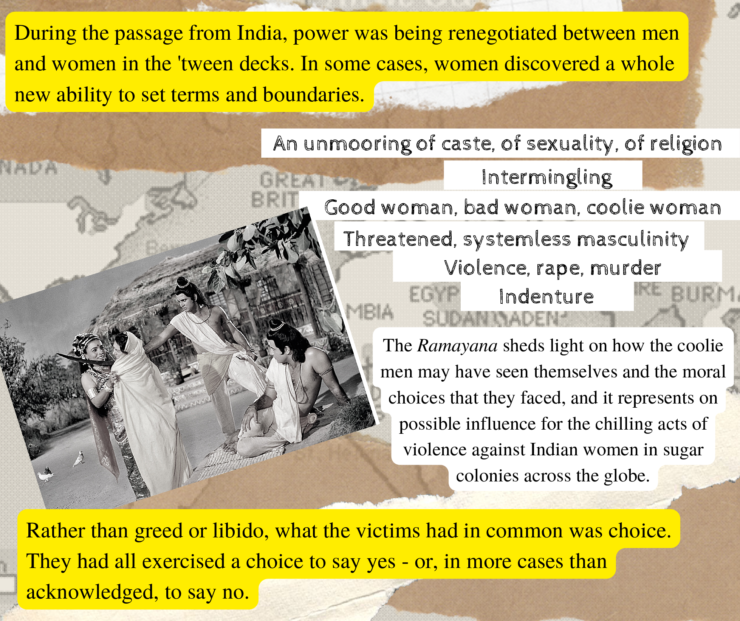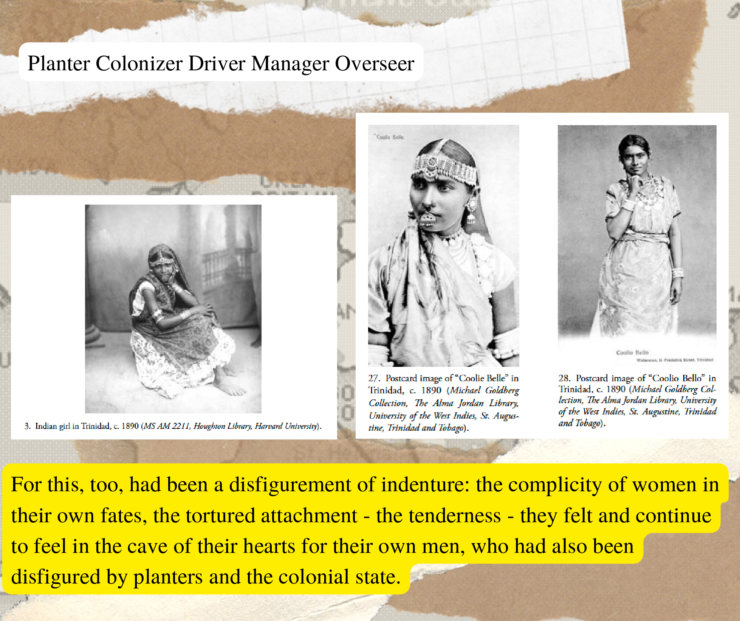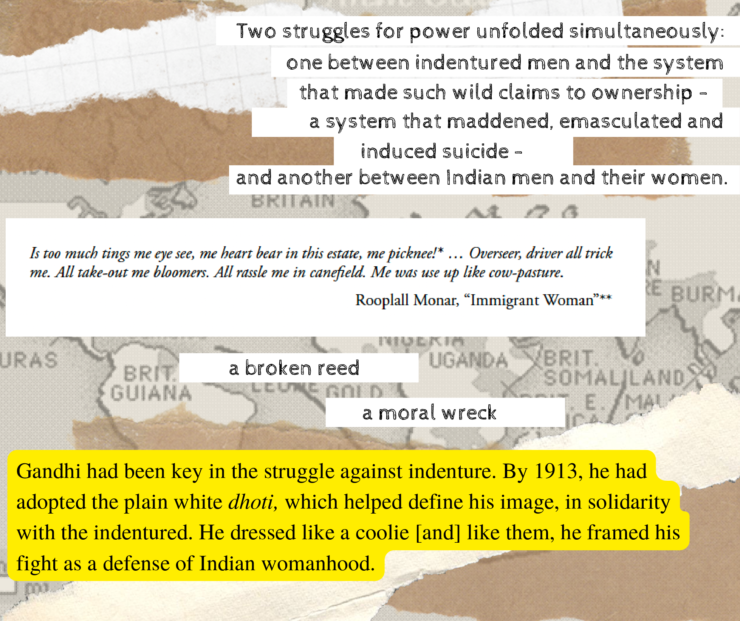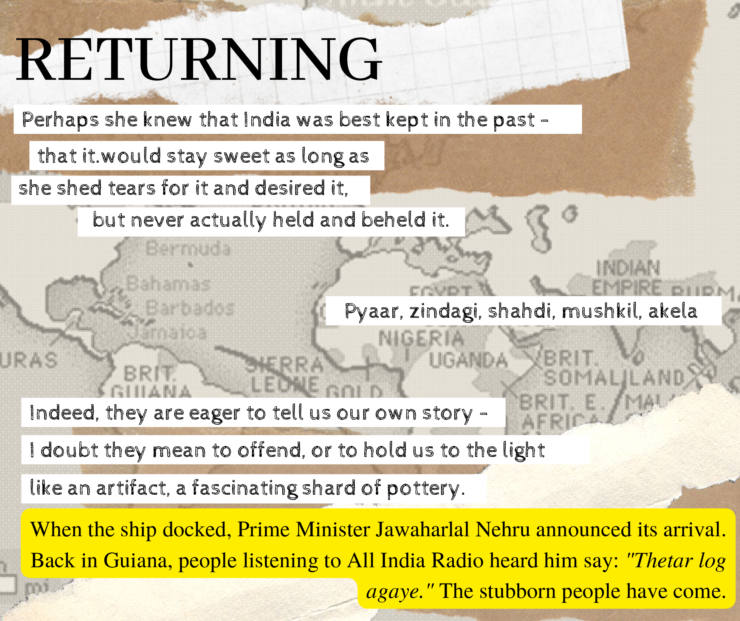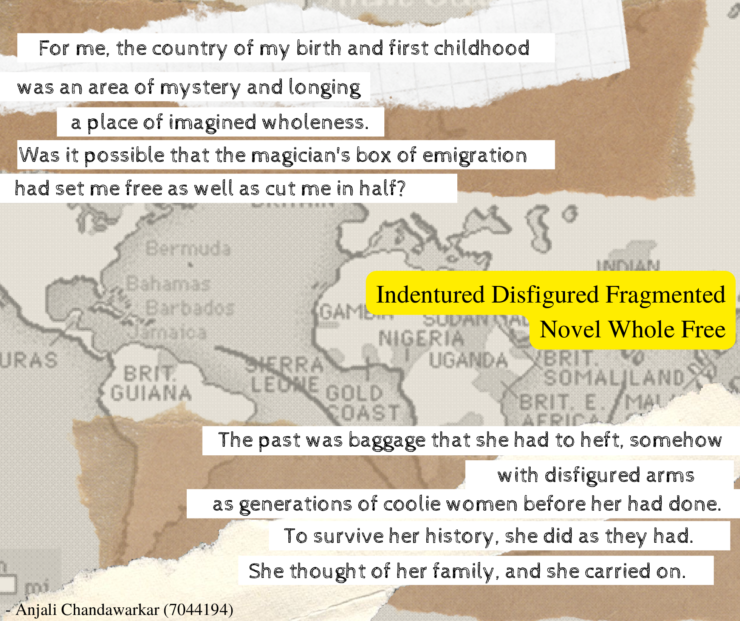Guyana
Coolie Woman: Reading the Journey of Indenture from India to Guyana – Anjali Chandawarkar
In the context of this course, my cultural map traces the journey of indentured labour from the East Coast of India to Guyana (or British Guiana, as it was known earlier) in the Caribbean. I have based it entirely on Gaiutra Bahadur’s book, Coolie Woman: An Odyssey of Indenture (2013). Bahadur’s work makes visible an aspect of indenture that otherwise has largely been left off the record books and academic undertakings in the Caribbean: the lives of the women who travelled to and laboured on the sugar cane plantations for over a century.
Bahadur, who emigrated to the United States from Guyana aged seven, builds the narrative of the coolie woman through the figure of her great-grandmother, Sujaria, who travelled alone aboard The Clyde in 1903 to work on the plantations. She investigates the role and functions of power along the axes of gender, caste, religion, race in India (prompting the emigration), in Guyana (upon arrival and settlement), as well as on the ship in between. She frames the experience of indenture as one that disfigures or fragments not only the labourer’s body through work and violence but also marks their identities and the identities of the generations to come after them.
I use this notion of disfigurement and fragmentation as a method of reading and interacting with the book. In my cultural map, I have used quotes and photographs from the book superimposed over a map of the route taken from India to Guyana to constantly visualise the journey and its consequences. The quotes have also been indented and punctuated with line breaks in some places to encourage a closer look at what is being said. I chose, also, to keep the epigraph of the book – the poem “Cartographies of Silence” by Adrienne Rich – because I believe it symbolises the presence of women as well as the often overlooked experience of indenture when discussing the historical trajectory of slavery.
The process of the making this map made me think about my positionality as an upper caste, Hindu Indian – a positionality that Bahadur rightly accuses of reductively framing and crystalising the Guyanese experience and identity. The map is also an attempt to resist the tendency to stereotype and formed forced connections, and hence, my focus on the disfigurement and fragmentation.
Works Cited
Bahadur, Gaiutra. Coolie Woman: The Odyssey of Indenture. Hurst Publishers, 2013.


